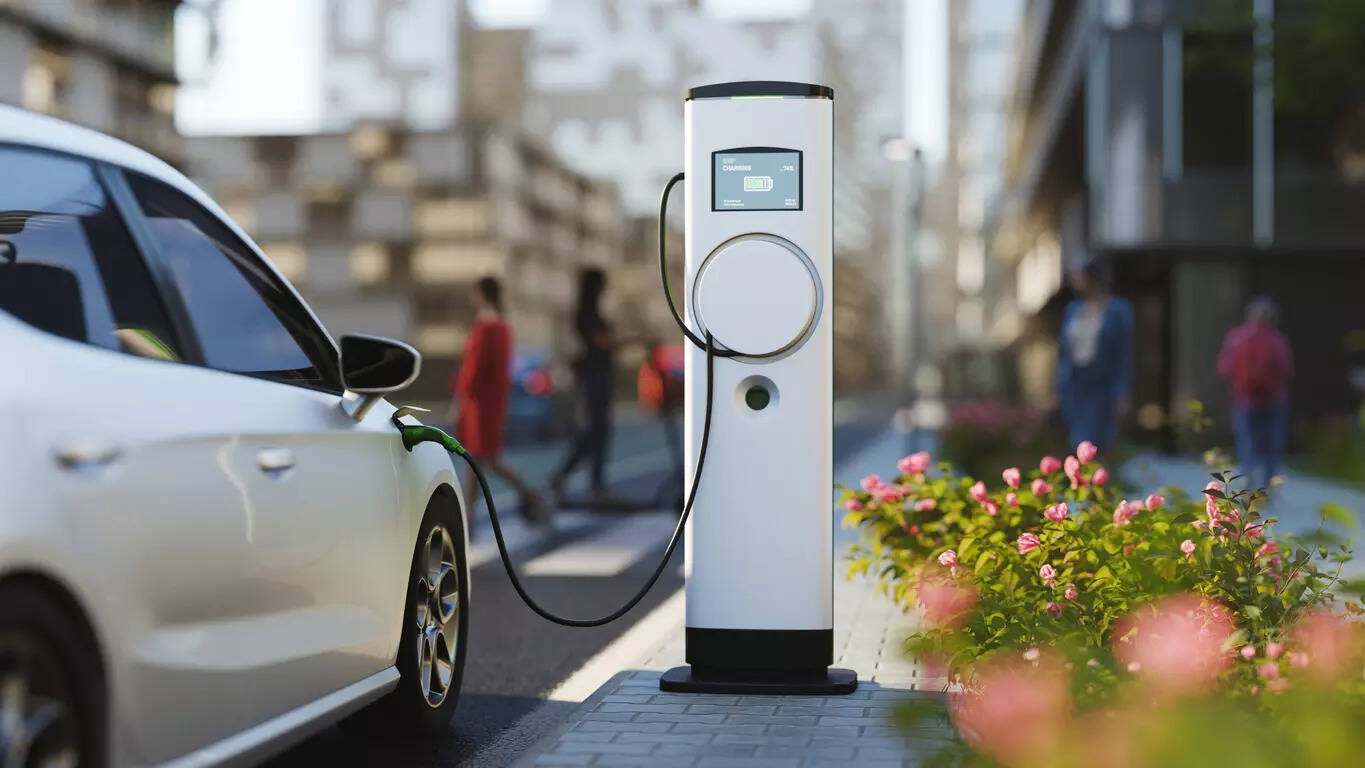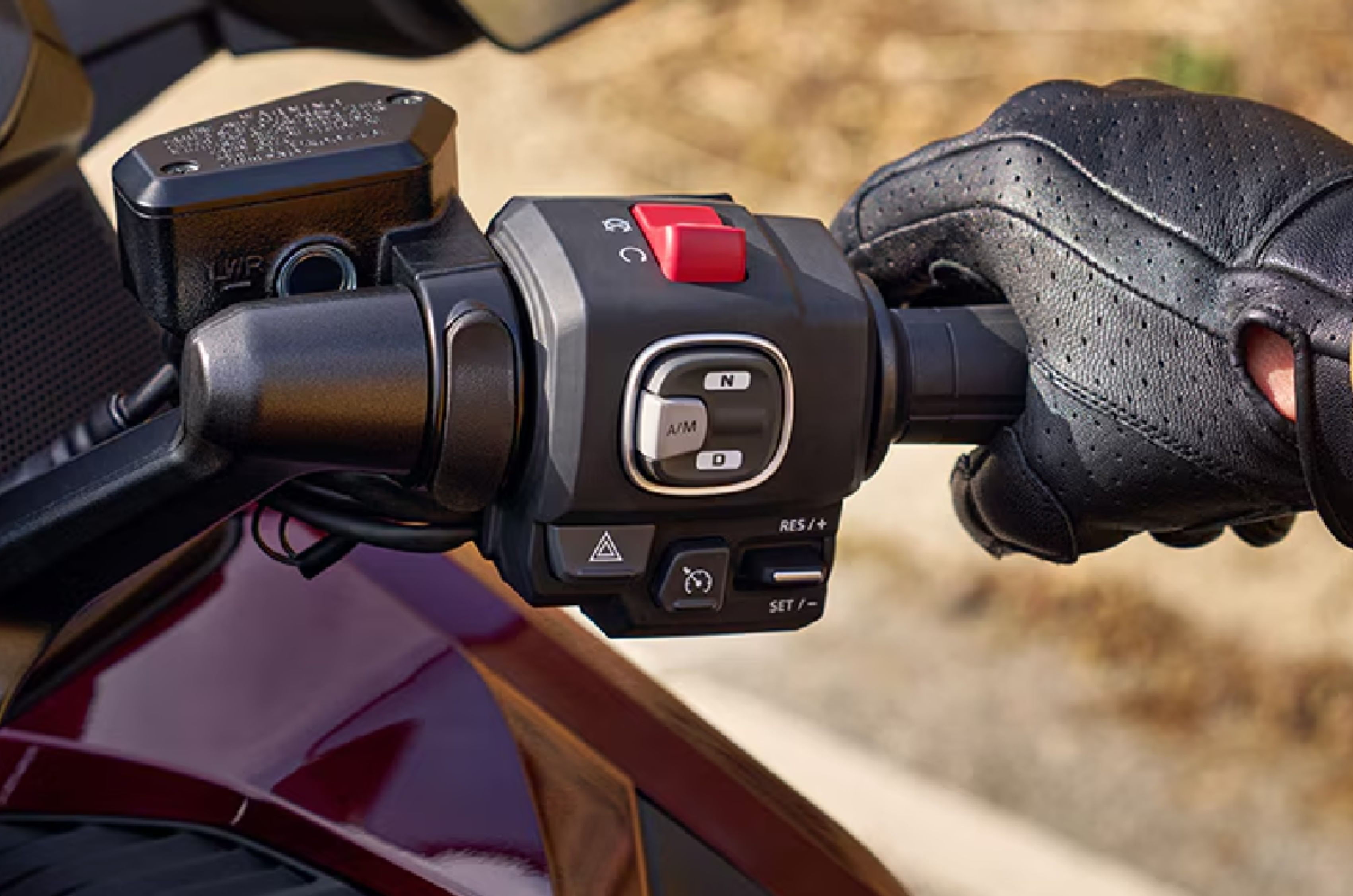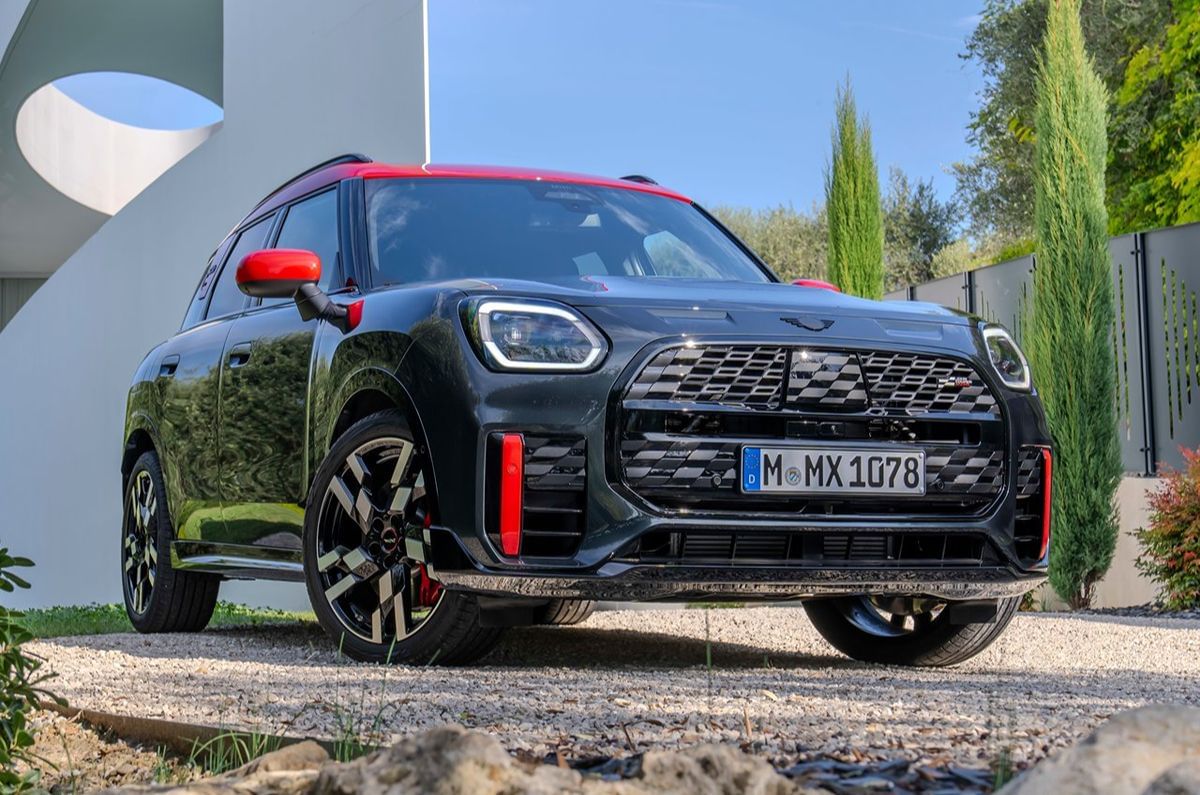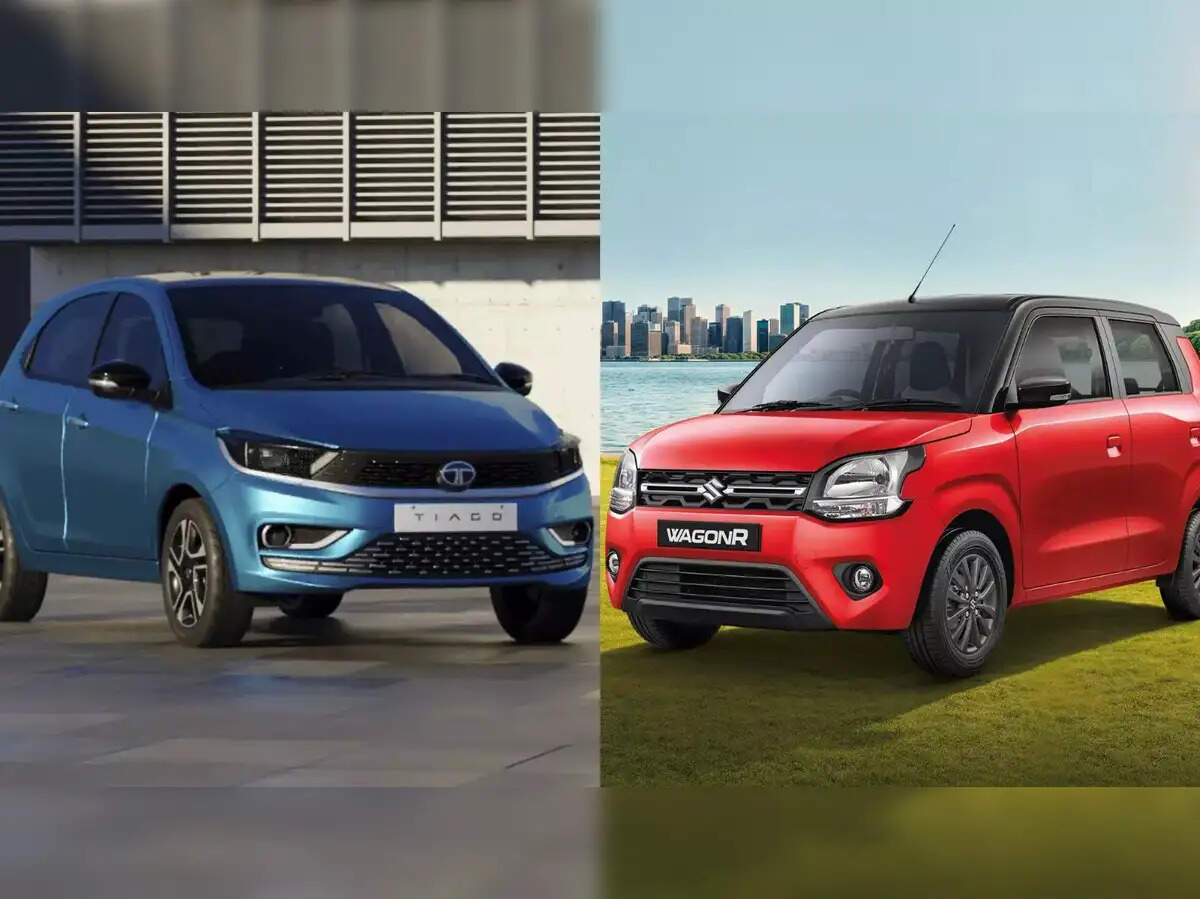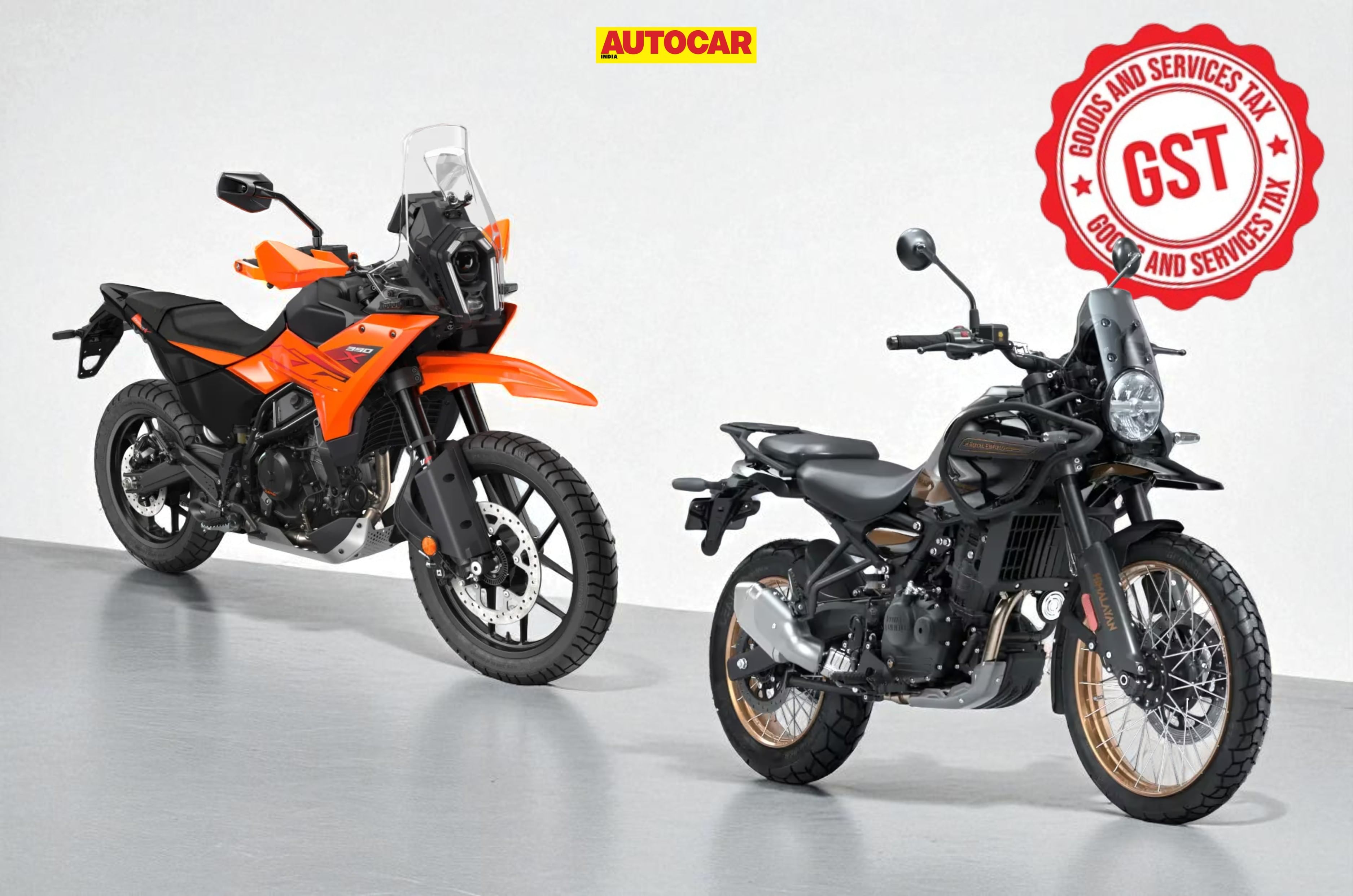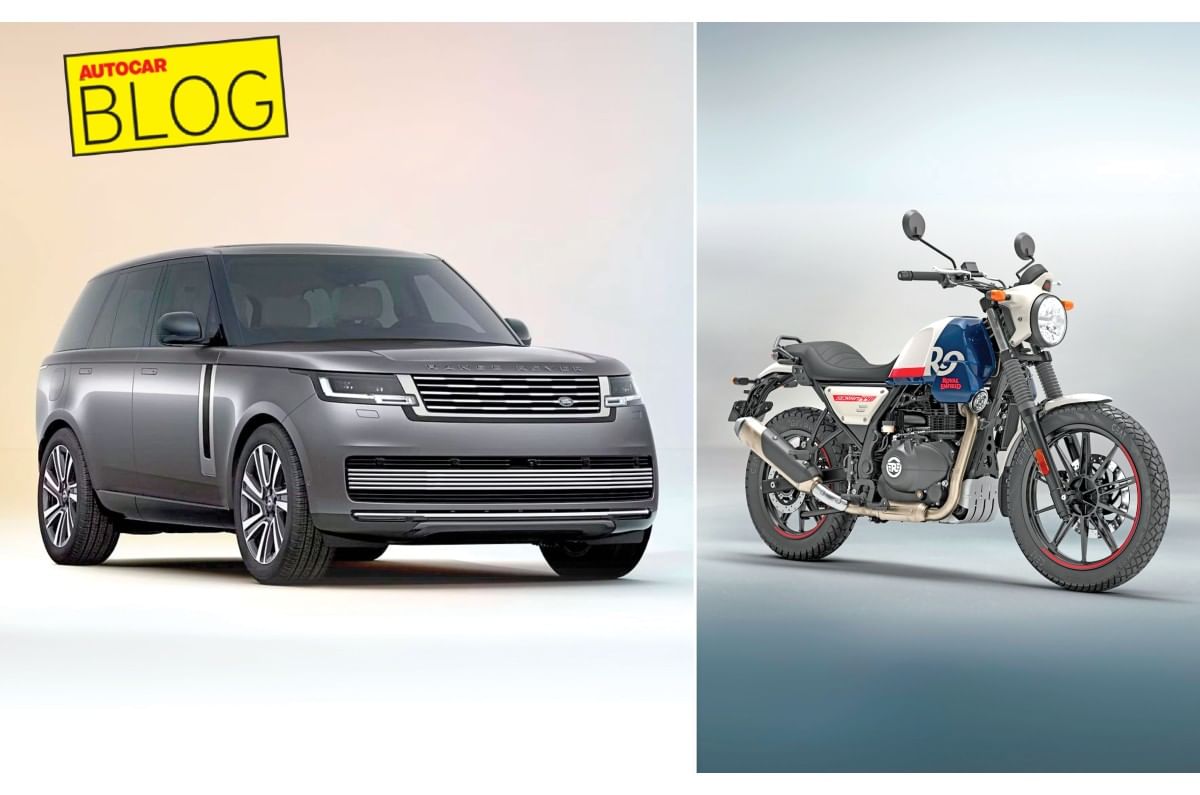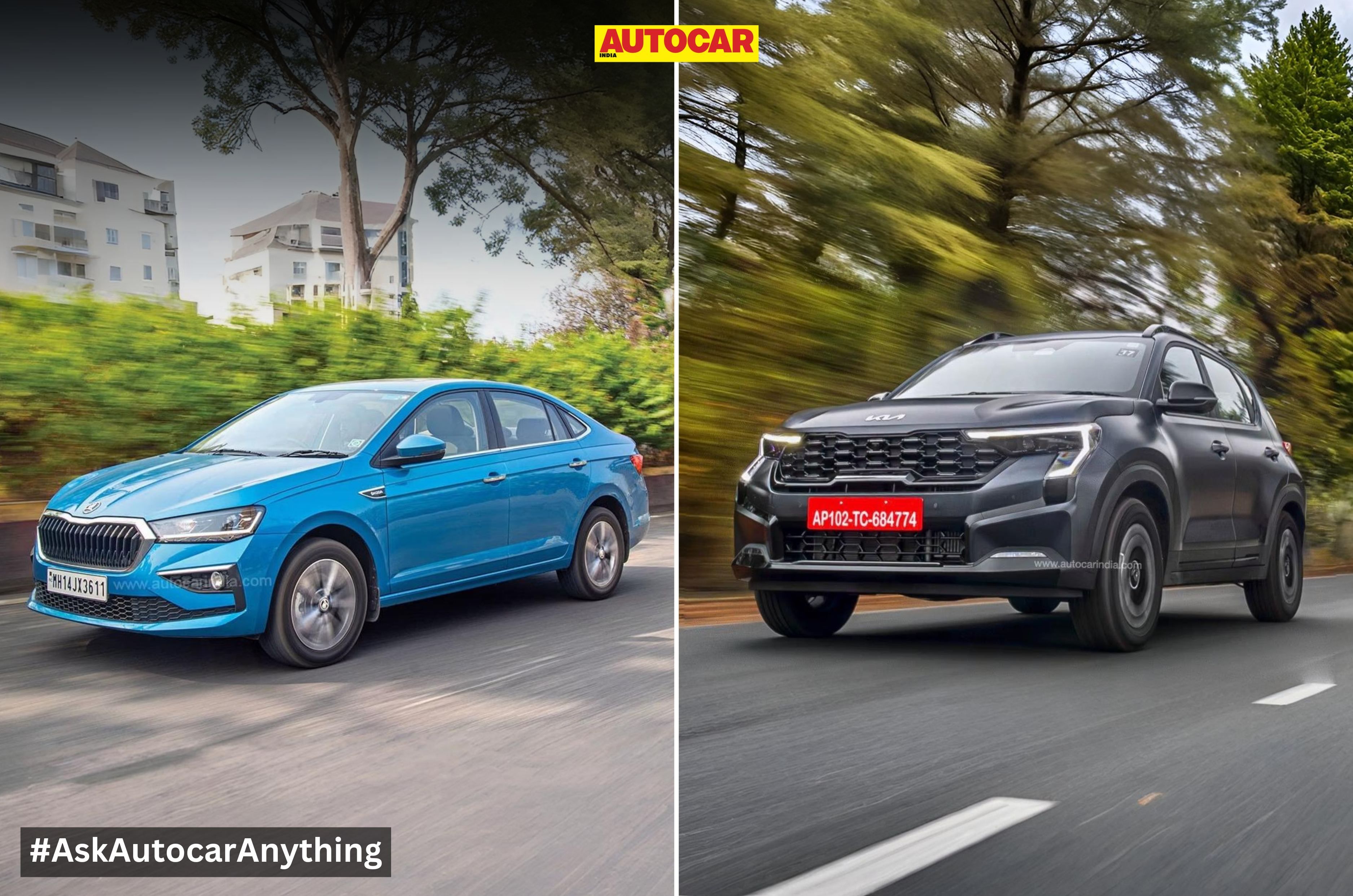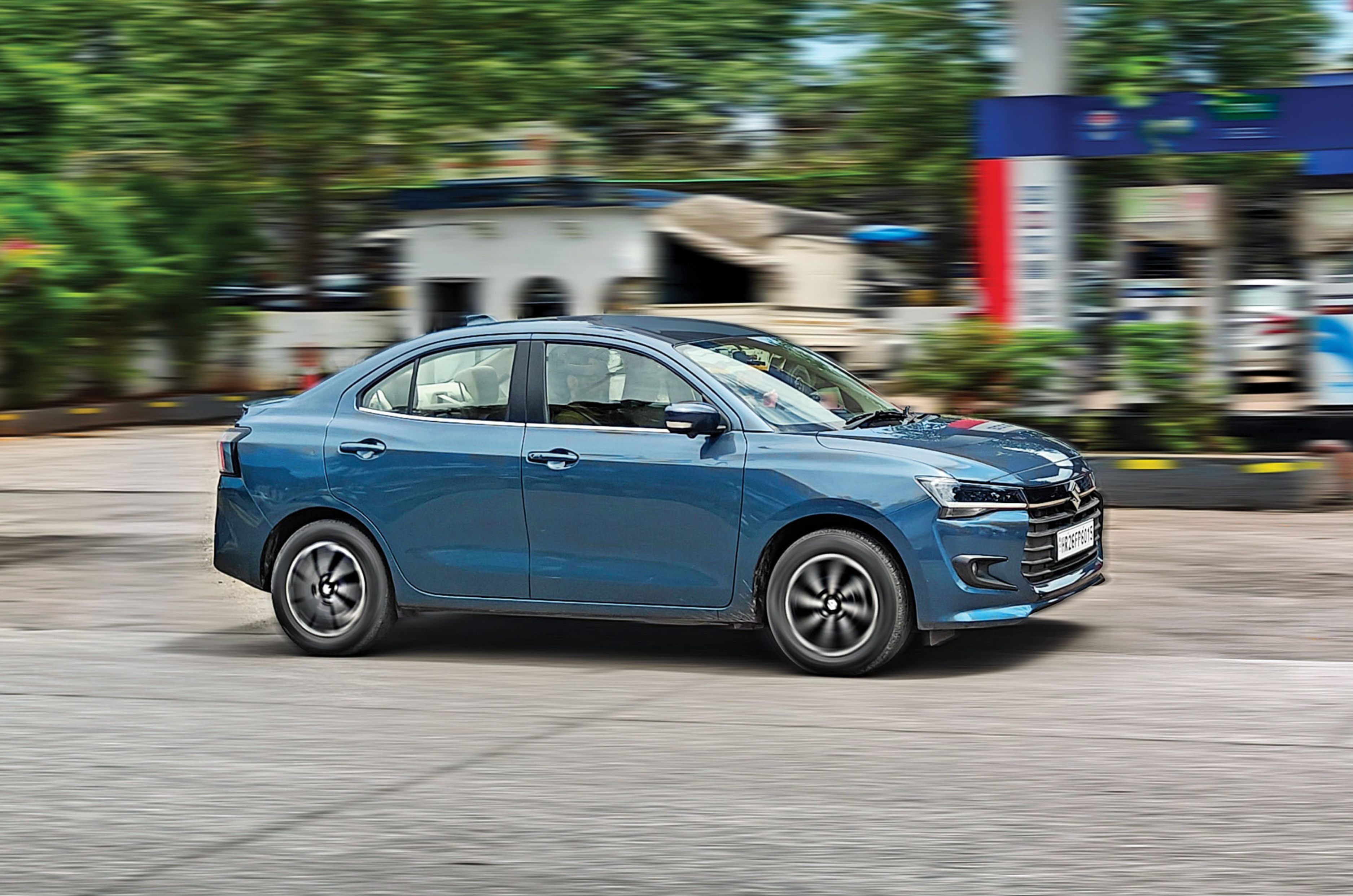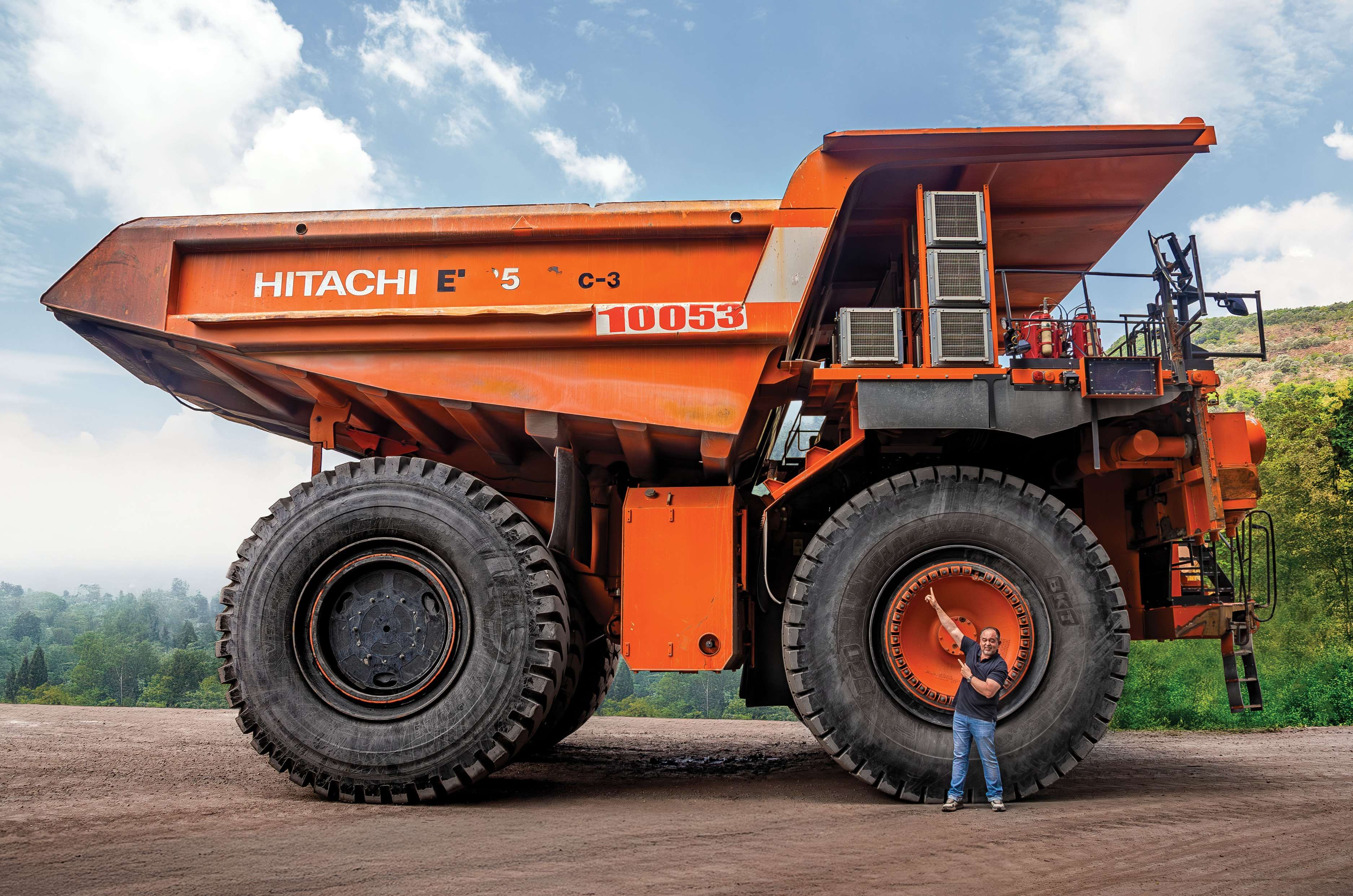
Getting up close and personal with the Tata Hitachi EH 3500 for the first time is severely disorienting. As we drive in, the truck keeps looming larger and larger in the windscreen. Soon, the top half of the dump truck disappears above the roof of the Innova, and then, finally, as we park alongside, all we see from the side window is the lower half of the tyre! Gulp.
I step out and find myself looking up at what can best be described as a three-floor building. Words fail me. For the next few seconds, I just stare up at this self-contained office block. Behind me, cameramen Harshad and Kuldeep tumble out, slack-jawed, each having their own little Jurassic Park moment. Remember the scene when they see the dinosaurs for the first time? Yeah.

Then, as I walk towards the truck, I feel I’m on the set of another Hollywood belter: Honey, I Shrunk the Kids. Finally, I gingerly reach up and touch the tyre. It’s around ten feet tall, the average height of your ceiling at home. As if that weren’t shocking enough, we are then led around the front wheel, past the towering suspension, until we finally find ourselves standing at full length UNDER the truck!
Real bulk, brute force

Even more fascinating is that the bulk is real. Understand that the tipper is strong enough to cradle around 200 tonnes of load (three main battle tanks) in the loading bay. The gross vehicle weight is a pavement-crumbling 3,22,000kg or 322 tonnes! Partly why it’s the roads that have to be certified for this vehicle rather than the other way around.

So much for the bulk, but how does it have the strength to hold everything together? Now, real strength on a vehicle like this, engineers say, comes from the inside out, and here it’s the frame, which looks as stout as a steel bridge, with massive girders and forged metal sections. Built of special steels that make up the closed box section chassis longerons, individual sections are so solidly built that it’s very difficult to see the ladder-frame-like structure.

Nestled in the front of the frame rests the long power unit, a massive ‘V’ sixteen that uses four coffee-table-sized turbos and a 12-foot-tall radiator fan. The engine is so large that it weighs 5 tonnes on its own. What’s the engine capacity? Well, some perspective first. We’re used to 100cc bikes and 1,000cc cars. But this real-life ‘Transformer’ has a 50,000cc engine! 50.3 litres, to be exact. Suss that. Equally mind-numbing: this Cummins QSKTA50-CE makes 7,871Nm of torque and 2,000 horsepower. Enough to move mountains.

Brute strength and size aren’t its only attributes; this truck has the smarts too. The EH 3500AC-3 uses no gearbox (remember the torque), no heavy propeller shaft or oversized differential. Rather, like a diesel locomotive, the engine runs a generator that powers the massive electric motors, one placed on each side of the rear axle like hub motors. Climb up a couple of steps, in fact, and you get into the ‘rear differential’ and inspect the twin electric motors, disc-type parking brakes and massive heat exchangers, which sit alongside.

The truck also uses semi-trailing arms at the rear – no, I didn’t check for 911-like lift-off oversteer – and the load-bearing struts use helium gas, with damping taken care of by a type of liquid silicon called NEOCON-E. Also used on the truck are pitch control to reduce nodding movements and an active form of ESP that not only brakes individual wheels but also stabilises those at the rear with an injection of power when a lack of traction is detected.
Titanic forces

On the way up to the cab, I feel my heart pounding in my chest. What feels even more surreal as I climb the steps that go diagonally across the radiator is that I’m now in the foliage, among the trees. And then, as I clamber into the cab, isolated on the extreme left of the truck, I stare in disbelief at where the right corner of the truck is. It’s 30 feet or 9.1 metres away! That’s wider than most dual carriageway roads. What would it be like to drive one of these trucks over our city roads? You can’t. The truck won’t fit. The right-side wheels would be on the other side of the divider!

Then, because of the railing that runs around the cab and the sheer bulk, it feels like I’m on board a large river barge. A proliferation of mirrors and a 360-degree camera do help, but as I settle down behind the wheel, my stomach churns as I have to begin by reversing out. I release the electric parking brake and drift back, the massive truck rolling gently down a slope.

What’s also different is that the brake pedal isn’t actually connected to the massive disc brakes. Squeezing down on the pedal activates regenerative braking. But the system is so effective, you almost never need to use the friction brakes, which you can by pressing another brake pedal (where you would normally have a clutch). The friction brakes actually intervene automatically just as the vehicle is coming to a stop.

The first few metres are scary. The massive truck shudders, does a mini lurch and begins to roll back. I quickly tap the brakes just to get a feel. But it’s a bit too hard; 141 tonnes of empty truck rocks forward and back. Need to use a softer foot on the brake pedal the next time. Then, as we begin to roll back again, I need to steer and take a 90-degree turn.
Even the steering wheel looks like it has come off a ship, and then, as I twirl it eyeballing the mirrors and screens simultaneously, the massive bulk drifts left. Imagine a ship leaving a dock or an average-sized building sliding back and moving away; this feels no different.

Then, after I straighten the wheel, I get back on the brakes, this time more smoothly. Much better. Less transfer of weight and almost no rocking. But the heat rejectors on my right hiss and spew heat like a dragon in a bad mood. The instructor in the passenger seat chuckles; it’s normal, he says, looking at my worried expression.
Getting onto the throttle for the first time has me overthinking again. The sheer mass, the amount of torque from the step-off from the massive electric motors – is there sufficient traction? My mind is racing. But it’s all for nought; the EH 3500 eases forward gently and progressively, almost like it’s on auto-throttle. What also makes driving easier is that there actually seems to be a direct correlation between the revs of the engine and the amount of torque put out by the massive AC electric motors on the rear axle.

The engine redlines at around 2,100rpm, but 800rpm is all you need to get this beast moving smartly. And then, past 1,200rpm, there seems to be a steep ramp-up in the current flowing through the big motors, and the truck gets an extra kick of power that moves it forward effortlessly. Guess it needs this for when the rear is loaded with about 200 tonnes.

The Hitachi also rides reasonably well. The massive dips and troughs on the dirt ‘highway’ don’t cause it to pitch back and forth excessively, even with the empty loading bay, and then, after I get up to a certain speed, even big ruts are ironed out. And once I get my head around how to place the truck in a turn, the handling is also surprisingly friendly. Sure, I have to keep the width in mind and imagine it going down the path ahead. But for all the crazy weight transfer and the titanic forces involved, you can drive this beast in a relaxed manner
Later, I even manage U-turns and reversing with ease. Who would have thought? And then, on the longer stretches, I even get comfortable revving the beast-like engine higher, the big e-motors at the rear hurling the truck forward like it is made of aluminium or cardboard. Must say, this diesel-electric combo works superbly, and the throttle is almost as linear as a regular combustion engine, with only a slight delay noticeable.
Brawn and brains
It costs roughly Rs 20 crore, and while you can buy one, there’s nowhere you can really drive it. Unless you have your own mine, that is. Massive, efficient, high-tech and a perfect fit for the job of hauling up to nearly 200 tonnes around a mine, the Tata Hitachi EH 3500AC-3 is a machine that distorts reality.

Basically as large and as formidable as an apartment block on wheels, it combines diesel-electric hybrid tech and massive size and weight into the same equation seamlessly. What an extreme machine; what an engineering feat! That we can build these machines, control the forces and make them relatively simple to operate says so much.
Inside the V16 hybrid powertrain

So how does it work? When the diesel engine is spun, it turns a high-voltage AC generator instead of a gearbox. This helps supply electricity to a pair of massive AC motors mounted on the rear axle. So not only is the transmission of power effortless and easy, but the abundance of torque generated by the motors as soon as you tap the throttle also makes the truck move forward effortlessly, precisely when you need it.

These motors also allow for regenerative braking, used exclusively to slow down the truck. So much so that there’s no mechanical friction even when you need to slow 322 tonnes – repeatedly. What’s sort of unique here is that this hybrid has no large-capacity battery for energy storage. So a lot of the energy generated on long stretches is converted back to heat and re-emitted. Similar motors from Hitachi, incidentally, are also used on the Bullet train.
Also see:
Living with a Porsche 911 Carrera 4 GTS: First world problems










